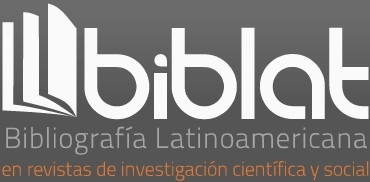Bases of Tensive Thinking
DOI:
https://doi.org/10.35494/topsem.2022.1.47.768Keywords:
Semiotics, Prosody, Tempo, Tonicity, Intensity, ExtensionAbstract
In this paper, the author reveals some of the decisive steps that marked the entry of the tensive thinking into the greimasian semiotics. The main subject of this narrative was the Frenchman Claude Zilberberg, who knew how to conduct the counterpoint of the semiotization founded by the Lithuanian theorist with the “temporalization” practiced by Paul Valéry, with the idea of accentuation professed by Ernst Cassirer and also with the musicalization found in Gisèle Brelet. Step by step, Zilberberg went on to a tensive grammar, in which intensity (affective force) and extension (field of comprehension of facts) are articulated, and at the same time to a grammar of expectation that responds to the coexistence of antagonistic concepts, including, of course, their own contrary concepts, such as “event” and “surprise”.
Downloads
References
Cassirer, E. (1973 [1925]). Mito y lenguaje. Trad. del alemán por Carmen Balzer. Buenos Aires. Ediciones Nueva
Visión [En portugués: Linguagem e Mito, Trad. de J. Guinsburg e Míriam Schnaider-man, São Paulo,
Perspectiva, 2017] [En francés: Langage et mythe, París, Les Editions de Minuit, 1989].
Cassirer, E. (1998 [1925]). Filosofía de las formas simbólicas. Tomo II. El pensamiento mítico. Trad. de Armando
Morones. Madrid. FCE [En portugués: A Filosofia das Formas Simbólicas II, São Paulo, Martins Fontes, 2004].
Deleuze, G. (1968). Différence et Répétition. París. PUF.
Greimas, A. J. (1971). Semántica estructural. Investigación metodológica. Trad. de Alfredo de la Fuente. Madrid.
Gredos [En el original en francés: Sémantique structurale, París, Seuil, 1966] [En português: Semântica
estructural, Pesquisa de método, São Paulo, Cultrix; EDUSP, 1973].
Hjelmslev, L. (1971). Essais Linguistiques. París. Minuit.
Tatit, L. (2004). O Século da Canção. Cotia, SP. Ateliê Editorial.
Valéry, P. (1973). Cahiers. Tome 1. Gallimard. Coll. La Pléiade.
Zilberberg, C. (1990a). Relativité du rythme. Protée, 18(1).
Zilberberg, C. (1990b). Pour une poétique de l’attention. En A. Berrendonner et H. Parret. L’interaction
communicative. Actes du colloque de Bellagio de février 1988. Berne. Peter Lang.
Zilberberg, C. (1992). Défense et illustration de l’intensité. En F, Jacques (Org.). La quantité et ses modulations
qualitatives. Limoges; Ámsterdam. PULIM; Benjamins.
Zilberberg, C. (1993). Description de la description. En M. Rasmussen. Louis Hjelmslev et la sémiotique,
(24). Travaux du Cercle Linguistique de Copenhague.
Zilberberg, C. (1995). Plaidoyer pour le tempo. En F. Jacques. Le devenir. Limoges. Pulim.
Zilberberg, C. (1996). Signification et prosodie dans la dialectique de la durée de G. Bachelard. En P. Sauvanet et
J. J. Wunenburger (Orgs.). Rythmes et philosophie. París. Éditions Kimé.
Zilberberg, C. (1999). La dynamique du vers selon Mallarmé. En M. Gailliard (Coord.). Champs du signe. Toulouse.
EUS.
Zilberberg, C. (2001). De l’affect à la valeur. En M. Castellana (Org.). Texte et valeur. París. L’Harmattan.
Zilberberg, C. (2004). As Condições Semióticas da Mestiçagem. Em E. Cañizal, Peñuela & K. E. Caetano. Olhar à
Deriva: Mídia, Significação e Cultura. São Paulo. Annablume [En el original en francés: « Les contraintes
sémiotiques du métissage », Revue Tangence, (64), Esthétiques du métissage, pp. 8-24, 2001].
Zilberberg, C. (2016a). Semiótica tensiva. Trad. de Desiderio Blanco. Lima. Fondo Editorial de la Universidad de
Lima; FCE [En el original en francés: Éléments de grammaire tensive, Limoges, PULIM, 2006].
Zilberberg, C. (2016b). La estructura tensiva. Trad. de Desiderio Blanco. Lima. Fondo Editorial de la Universidad
de Lima [En el original en francés: La structure tensive, Lieja, PUL, 2012].
Downloads
Published
How to Cite
Issue
Section
License

Tópicos del Seminario is licensed under a Creative Commons Reconocimiento-NoComercial-CompartirIgual 4.0 Internacional License.














